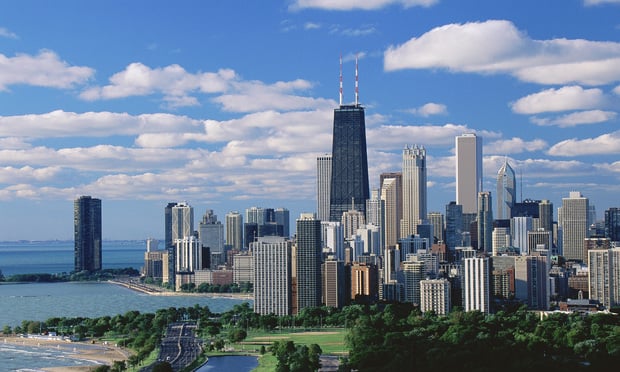CHICAGO—After a first quarter that saw the direct vacancy rate in the CBD remain largely flat, the downtown submarkets perked up in the second quarter with their strongest quarter since the end of 2007, according to data just released by MBRE. The entire downtown recorded 526,332-square-feet of positive absorption and direct vacancy dropped 40 bps to 14.7%, the largest drop in five years. MBRE researchers say the improvement shows a modest but accelerating recovery, at least in the near term.
However, job growth was a bit anemic and adversely affected the office market. Although the overall economy has been recovering for some time, with companies bringing in over 2,000 new jobs to the CBD in 2013 alone, total employment has “only rebounded 4.2% since its December 2009 nadir,” and “overall job growth must improve markedly for a strong and sustainable recovery to occur.” Still, MBRE “expects the rate of positive absorption to slowly increase over the next two years, resulting in a steadily declining vacancy rate.”
The CBD also saw a lack of energy in some sectors. Weak demand for class C office space, for example, continues to act as a drag on some of the downtown submarkets, especially River North. However, the Central Loop submarket had perhaps the best performance, with 274,139-square-feet in positive absorption, most of it class B and C space. But class A in the central district had only 2,145-square-feet of positive absorption and their vacancy rate remained flat at 9.2%. The West Loop submarket reversed that pattern, with positive absorption of 162,451-square-feet of class A offices, while their vacancy rate sank 50 bps to 13.5%.
But the increased demand for class A space may help strengthen the ongoing recovery. MBRE has identified 18 tenants currently seeking spaces larger than 100,000-square-feet but only 9 such class A spaces exist. Developers had been expected to secure leases for at least 50% of a proposed project before getting financing, but, according to MBRE, financiers have decided to ease that requirement. This could assist the 11 proposed developments, ranging from 350,000-square-feet to 1.3-million-square-feet, which remain on the drawing board, trying to attract a critical mass of tenants. “Increased demand through 2016 is expected to be great enough to warrant further development of new office buildings,” MBRE says.
Want to continue reading?
Become a Free ALM Digital Reader.
Once you are an ALM Digital Member, you’ll receive:
- Breaking commercial real estate news and analysis, on-site and via our newsletters and custom alerts
- Educational webcasts, white papers, and ebooks from industry thought leaders
- Critical coverage of the property casualty insurance and financial advisory markets on our other ALM sites, PropertyCasualty360 and ThinkAdvisor
Already have an account? Sign In Now
*May exclude premium content© 2025 ALM Global, LLC, All Rights Reserved. Request academic re-use from www.copyright.com. All other uses, submit a request to [email protected]. For more information visit Asset & Logo Licensing.








